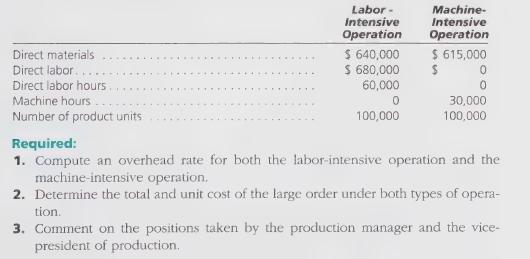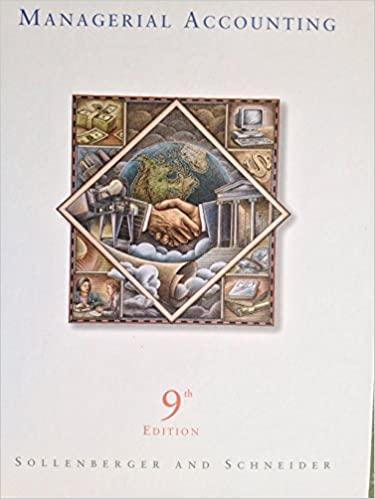Automation and Cost. In 1998, Pioneer Motors, Inc. automated its production lines. As a result, virtually all
Question:
Automation and Cost. In 1998, Pioneer Motors, Inc. automated its production lines. As a result, virtually all of the labor that directly related to creating the prod- ucts was eliminated. A smaller labor force is required, and the remaining workers are primarily monitoring machine operation and product quality. What was once classified as direct labor is now reclassified as indirect labor. Total budgeted manufacturing costs for 1998 as a labor-intensive operation are compared with the budgeted costs for 1999 with a machine-intensive operation, as shown in the following table:
 When the company operated with more labor, overhead was assigned to the products on the basis of 400,000 direct labor hours. Under the automated opera- tion, the rate is based on 500,000 machine hours. One of the production managers states that the total overhead costs of manu- facturing are higher than they were before and that the company did not save anything by automating the production lines. The vice-president of production disagrees: "While total overhead costs may be higher, the increased productivity makes it possible for us to serve a growing market with lower costs per unit of product." The following table shows the cost data for a large order assuming it was produced under each production process:
When the company operated with more labor, overhead was assigned to the products on the basis of 400,000 direct labor hours. Under the automated opera- tion, the rate is based on 500,000 machine hours. One of the production managers states that the total overhead costs of manu- facturing are higher than they were before and that the company did not save anything by automating the production lines. The vice-president of production disagrees: "While total overhead costs may be higher, the increased productivity makes it possible for us to serve a growing market with lower costs per unit of product." The following table shows the cost data for a large order assuming it was produced under each production process:

Step by Step Answer:

Managerial Accounting
ISBN: 9780538842822
9th Edition
Authors: Harold M. Sollenberger, Arnold Schneider, Lane K. Anderson





